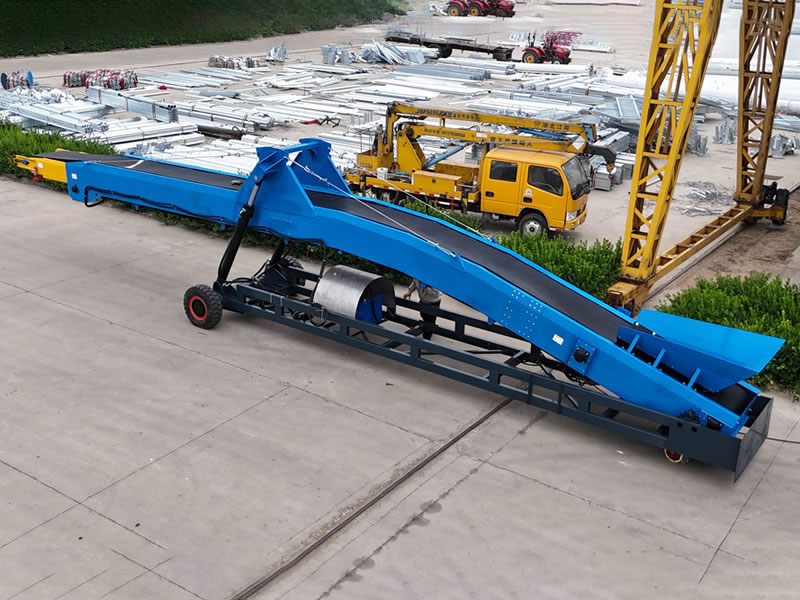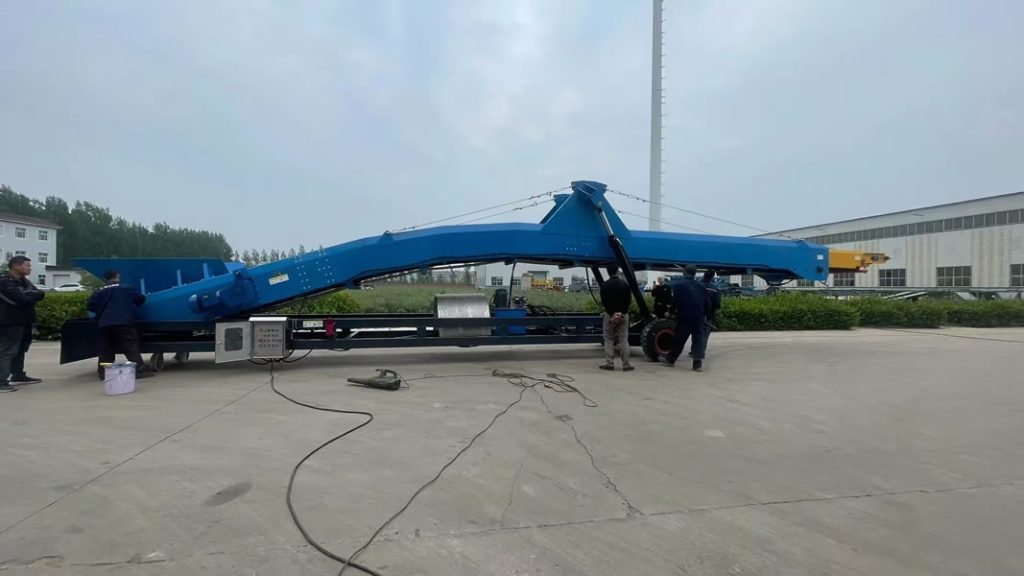
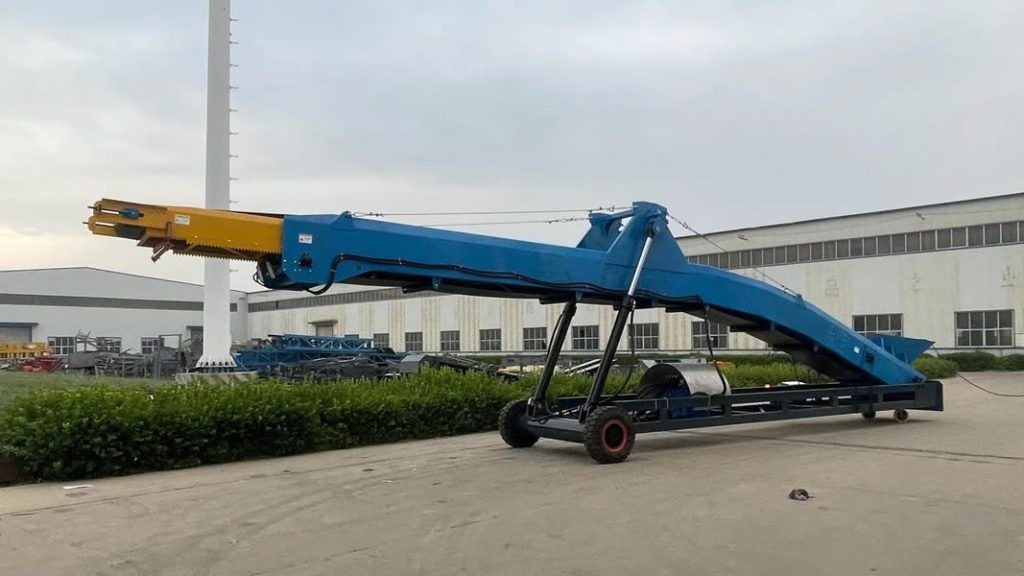
Application
Port Terminals
- Loading and Unloading:
At ports, container conveyors are used to unload containers from ships to the dock or load containers from the dock onto ships. The conveyor system improves port handling efficiency by streamlining container operations. - Horizontal Transport:
Used to move containers between different areas within the terminal, such as from the yard to the handling zone or from the freight station to the storage area. - Automated Yard Management:
In automated container yards, conveyor systems work in coordination with automated stacking cranes (ASCs), AGVs (automated guided vehicles), and other equipment to enable fully automated container storage and retrieval.
Railway Freight Stations
- Container Transfer:
At railway freight stations, container conveyors are used for loading and unloading containers between rail cars and other transport systems, enabling intermodal transportation. - Marshalling Operations:
In container marshalling yards, the conveyor system helps group and organize containers from different sources according to specific train dispatching plans, improving the efficiency and accuracy of rail transport.
Highway Freight Terminals
- Cargo Distribution:
Used to unload containers from trucks or load them onto trucks for regional cargo distribution and transfer. - Logistics Dispatch:
Integrated with warehousing systems and delivery vehicles to handle sorting, routing, and distribution of containerized goods, improving operational efficiency.
Logistics & Warehousing
- Inbound and Outbound Handling:
In logistics warehouses, the conveyor system unloads containers from transport vehicles and delivers them to designated storage areas, or moves containers from storage to outbound loading zones. - Sorting and Distribution:
Works with automated sorting systems and warehouse management software to streamline containerized goods sorting and dispatch.
Factory Workshops
- Raw Material & Finished Product Transport:
In large-scale factories (e.g., automotive manufacturing, machinery), the system transports raw materials, components, and finished goods between production lines and storage or shipping zones. - In-Process Material Handling:
During manufacturing, conveyors help move materials between different production stages, achieving continuous, automated workflows.
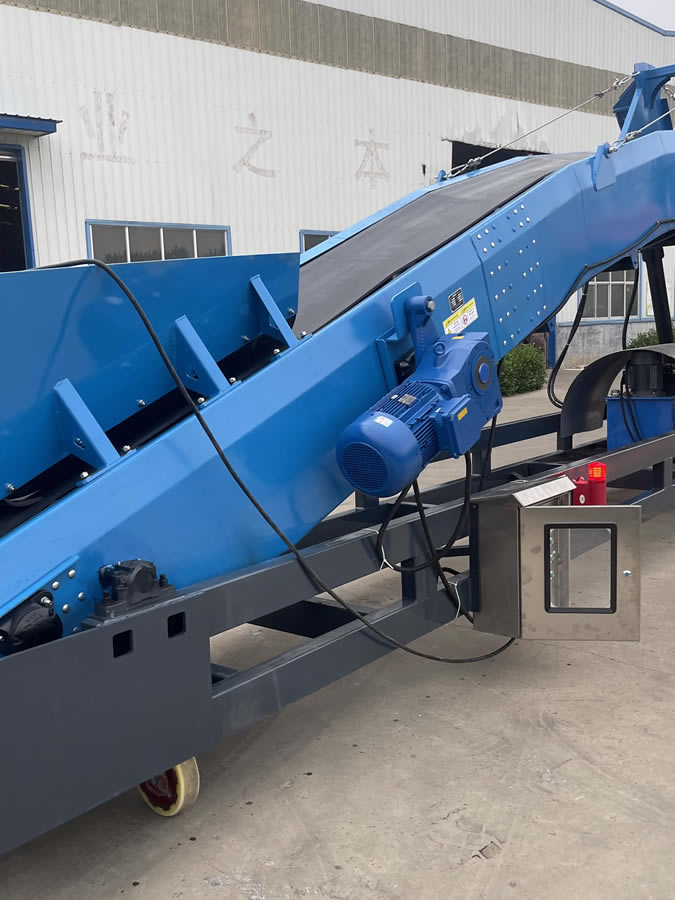
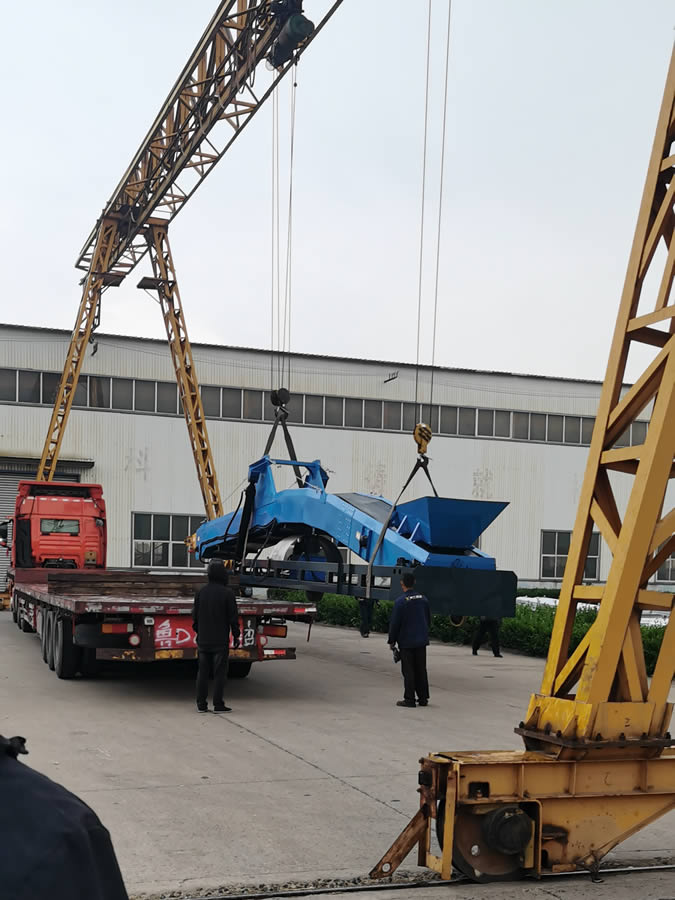
Features
High Conveying Capacity
- Capable of transporting large and heavy containers, including 20-foot, 40-foot, and other standard or custom-sized containers, with a maximum load of several tons.
- Large container conveyors can handle dozens to hundreds of containers per hour, meeting the demands of busy ports and logistics hubs.
Excellent Stability
- Constructed with high-strength steel structures and components, offering excellent rigidity and long-term stability during operation.
- Equipped with advanced drive and braking systems to ensure smooth startup, operation, and stopping—reducing impact and potential damage to containers and equipment.
High Automation
- Integrated with automated control systems for container identification, positioning, conveying, and loading/unloading.
- Sensors, controllers, and computer systems monitor the conveyor in real time, automatically adjusting speed, direction, and routing based on operational needs.
- Seamlessly integrates with other automation equipment such as cranes, stackers, and AGVs to form a highly efficient, intelligent logistics system—reducing manual intervention.
Strong Adaptability
- Customizable designs to suit different environments and layout requirements, including straight, curved, inclined, or declined configurations.
- Compatible with various container types (dry containers, reefer containers, tank containers) through specialized conveying components and fixtures.
Low Maintenance Costs
- Simple structure with high interchangeability and standardization of components, making maintenance and replacement easy.
- Built with high-quality materials and advanced manufacturing processes to reduce failure rates and extend service life.
- Equipped with fault diagnostics and early-warning systems to detect and resolve potential issues before they escalate—minimizing downtime and maintenance costs.
| Container Conveyor | ||
| Conveying Capacity | 200-2500t/h | Customizable |
| Conveying Speed | 0.5m/s-3m/s | |
| Belt Widths | 500mm、600mm、650mm、800mm、1000mm、1200mm、1400mm | |
| Conveying Distance | 10m、20m、30m、50m | |
| Motor Power | 1.5-180kW | |
| Power Supply Voltage | 220V、380V、450V、660V、690V AC | |
| Operating Temperature | – 20℃~50℃ | |
| Control Modes | Manual, Semi-automatic, Fully Automatic | |
| Sensor Types | Position Sensors, Weight Sensors, Speed Sensors | |

